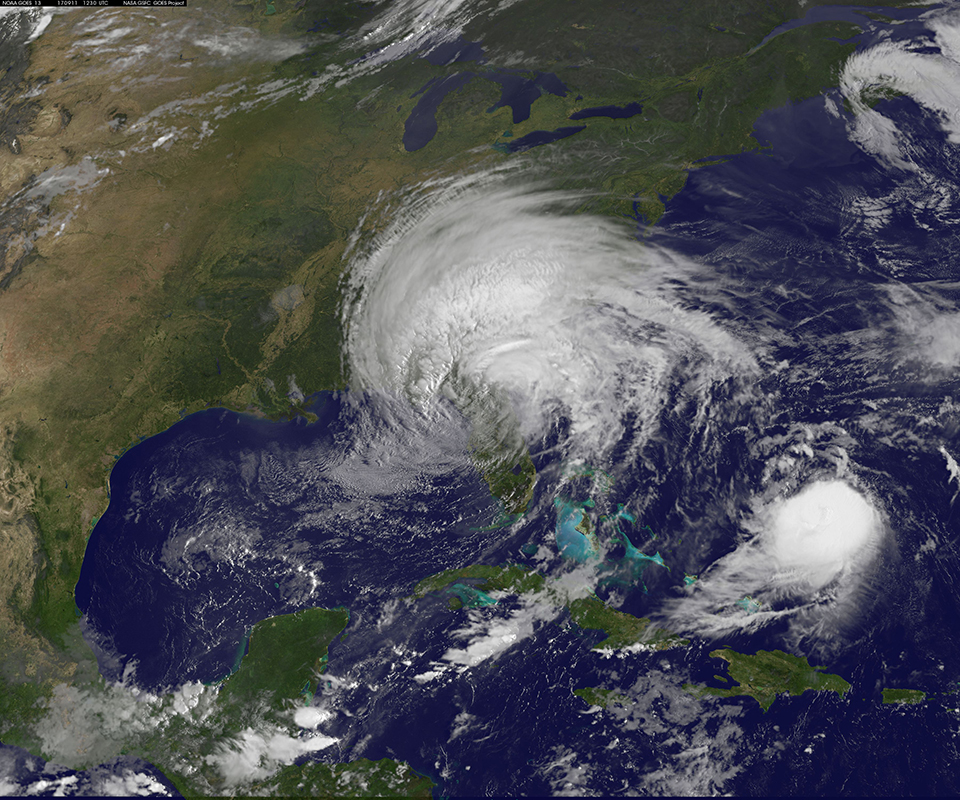Irma Heads North, Downgraded to a Tropical Storm

Irma, which recently weakened to a tropical storm, is still producing some wind gusts that are close to hurricane strength as it continues to move inland over northern Florida and toward Georgia.
But Irma's maximum sustained winds have dropped to around 70 mph (110 km/h), and the storm is expected to weaken further and become a tropical depression — with maximum sustained winds of 38 mph (62 km/h) or less — by Tuesday afternoon (Sept. 12), the National Hurricane Center (NHC) reported.
Now traveling at 18 mph (30 km/h), Irma is predicted to cross into southern Georgia this afternoon (Sept. 11) and head over Georgia and into Alabama through tomorrow, according to the NHC. [Hurricane Irma: Everything You Need to Know About This Monster Storm]
Irma's size means that hurricane-strength winds can extend up to 60 miles (95 kilometers) from the storm's eye, while winds at tropical-storm strength can reach more than 415 miles (665 km) from Irma's center, the NHC said.
Though Irma's time as a hurricane is done, the storm spent more than 11 days at hurricane strength, more than any other storm since Hurricane Ivan in 2004. Irma also spent the ninth-most days at hurricane strength since satellite observation of storms began in 1966, Philip Klotzbach, a meteorologist with Colorado State University, wrote in a tweet.
Irma's powerful winds have left more than 6 million people without electricity, representing approximately 62 percent of Florida's population, the Florida Division of Emergency Management reported. More than 800,000 of those people are in the Miami-Dade County area, about 600,000 are in Broward County and more than 500,000 are in Palm Beach County, according to the report.
Bands of rain will continue to drench the region, with up to 3 inches (8 centimeters) of rainfall expected in central Florida, and as much as 6 inches (15 cm) predicted for northern Florida.
Sign up for the Live Science daily newsletter now
Get the world’s most fascinating discoveries delivered straight to your inbox.
Strong winds, storm surges and floods are also still major concerns in Florida today. In Jacksonville, the St. Johns River (which floods at a height of 2 feet (0.6 meters), has already risen to more than 5 feet (1.5 m), exceeding the prior record of 4.1 feet (1.2 m), according to the National Weather Service. Storm surges along the coast could reach up to 6 feet (2 m) if the timing of the surge coincides with high tide, the NHC reported.
Original article on Live Science.

Mindy Weisberger is an editor at Scholastic and a former Live Science channel editor and senior writer. She has reported on general science, covering climate change, paleontology, biology and space. Mindy studied film at Columbia University; prior to Live Science she produced, wrote and directed media for the American Museum of Natural History in New York City. Her videos about dinosaurs, astrophysics, biodiversity and evolution appear in museums and science centers worldwide, earning awards such as the CINE Golden Eagle and the Communicator Award of Excellence. Her writing has also appeared in Scientific American, The Washington Post and How It Works Magazine. Her book "Rise of the Zombie Bugs: The Surprising Science of Parasitic Mind Control" will be published in spring 2025 by Johns Hopkins University Press.












